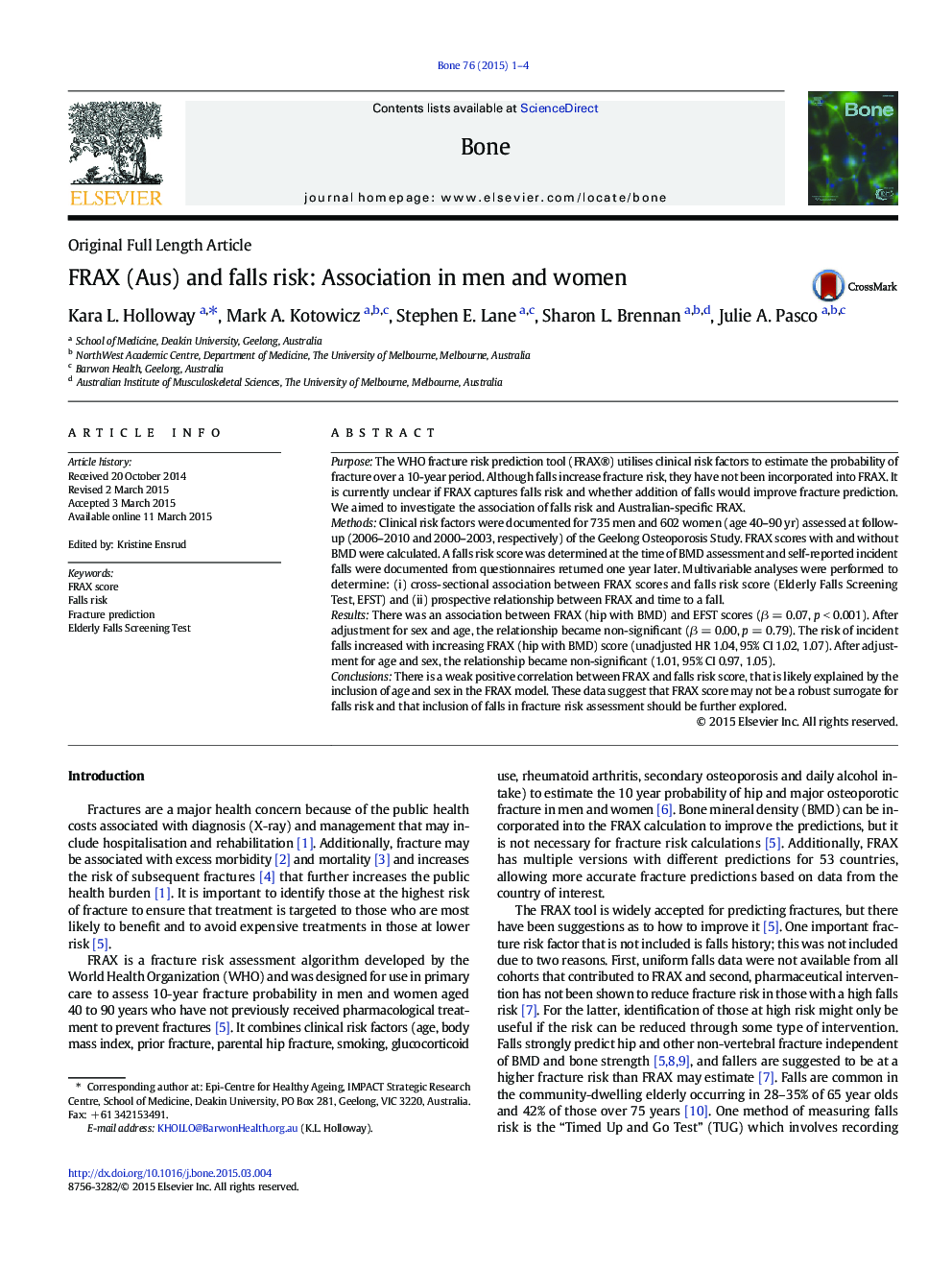| کد مقاله | کد نشریه | سال انتشار | مقاله انگلیسی | نسخه تمام متن |
|---|---|---|---|---|
| 5889535 | 1568143 | 2015 | 4 صفحه PDF | دانلود رایگان |

- Falls increase fracture risk, but are not currently included in the FRAX prediction tool.
- We investigated the association of FRAX and falls risk.
- Falls risk was weakly correlated with FRAX scores.
- However, the relationship was non-significant after adjustment for age and sex.
- Inclusion of falls in FRAX could be further explored.
PurposeThe WHO fracture risk prediction tool (FRAX®) utilises clinical risk factors to estimate the probability of fracture over a 10-year period. Although falls increase fracture risk, they have not been incorporated into FRAX. It is currently unclear if FRAX captures falls risk and whether addition of falls would improve fracture prediction. We aimed to investigate the association of falls risk and Australian-specific FRAX.MethodsClinical risk factors were documented for 735 men and 602 women (age 40-90 yr) assessed at follow-up (2006-2010 and 2000-2003, respectively) of the Geelong Osteoporosis Study. FRAX scores with and without BMD were calculated. A falls risk score was determined at the time of BMD assessment and self-reported incident falls were documented from questionnaires returned one year later. Multivariable analyses were performed to determine: (i) cross-sectional association between FRAX scores and falls risk score (Elderly Falls Screening Test, EFST) and (ii) prospective relationship between FRAX and time to a fall.ResultsThere was an association between FRAX (hip with BMD) and EFST scores (β = 0.07, p < 0.001). After adjustment for sex and age, the relationship became non-significant (β = 0.00, p = 0.79). The risk of incident falls increased with increasing FRAX (hip with BMD) score (unadjusted HR 1.04, 95% CI 1.02, 1.07). After adjustment for age and sex, the relationship became non-significant (1.01, 95% CI 0.97, 1.05).ConclusionsThere is a weak positive correlation between FRAX and falls risk score, that is likely explained by the inclusion of age and sex in the FRAX model. These data suggest that FRAX score may not be a robust surrogate for falls risk and that inclusion of falls in fracture risk assessment should be further explored.
Journal: Bone - Volume 76, July 2015, Pages 1-4